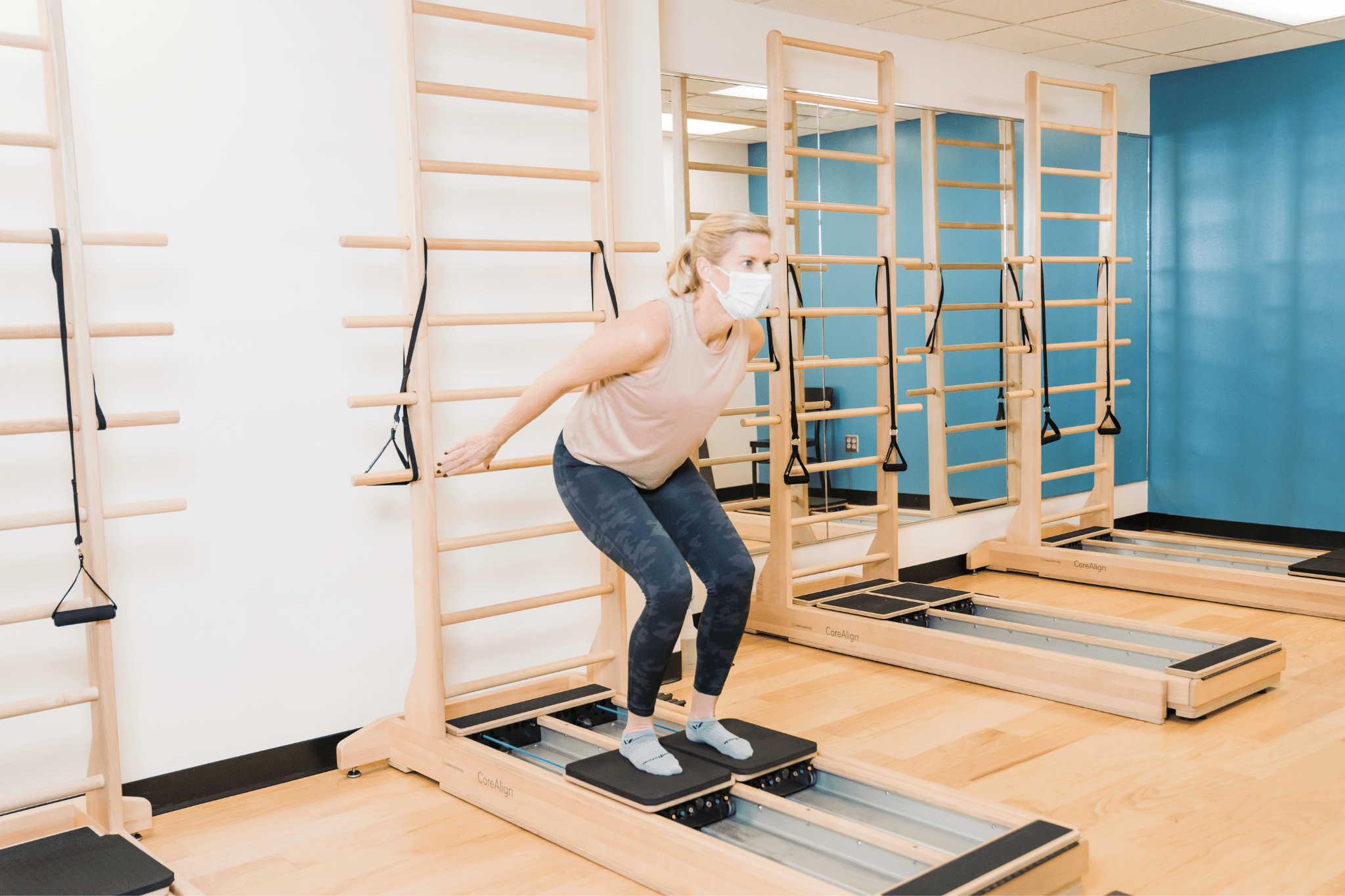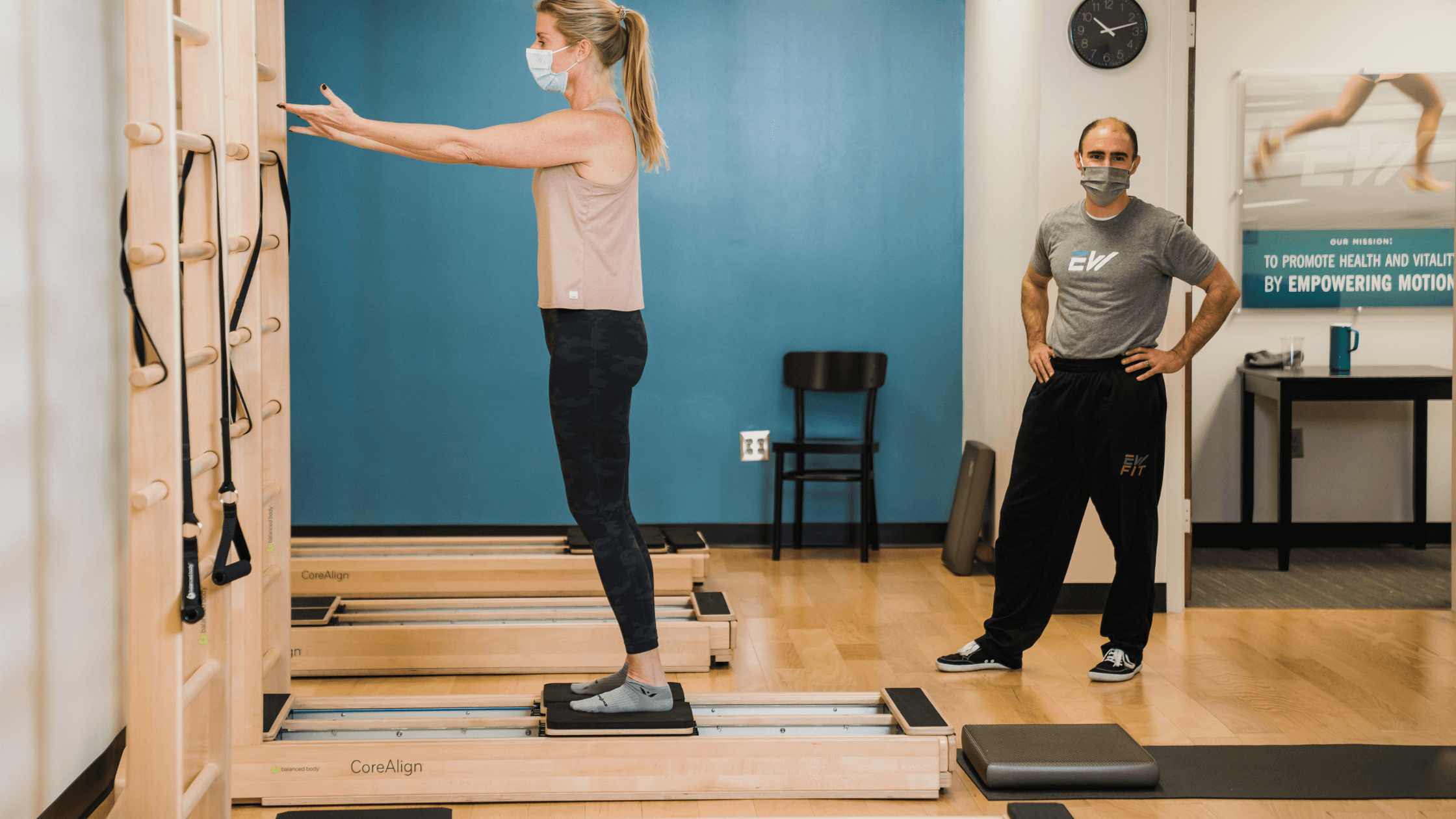Director of EW FIT // Motion Specialist // Certified Fitness Specialist // EW Motion Therapy Homewood
You have a few options when you want to work on your functional strength and balance. You could try a Pilates class, but one option you might not know about is CoreAlign. The CoreAlign machine is an excellent piece of equipment that you can use to improve your overall core strength and balance, but how do you know it’s right for you? And where can you go to use one?
The CoreAlign, as the name implies, targets core muscle stability and is similar to a Pilates reformer in a few ways. Because of its benefits, the physical therapists and personal trainers at EW Motion Therapy use our CoreAlign machines for therapy progressions and even fitness classes. Even if you choose not to pursue therapy with us, we still want to present the CoreAlign machine as an excellent choice for core strength and balance work.
This article discusses what the machine does, the benefits of using CoreAlign, and some situations in which CoreAlign might not work for you. With this information, you can improve your strength and balance to make the best decision for your health.
The CoreAlign is an important piece of Pilates equipment. Learn more about what other equipment does here.
What does the CoreAlign do?
Balanced Body now sells the CoreAlign as a piece of Pilates equipment, but a physical therapist named Jonathan Hoffman invented the device during his work with stroke patients. He figured out that a patient could move their lower body while keeping their upper body stable, and he used this to help many of his patients learn to walk again. Because of CoreAlign’s similarities to Pilates equipment, many studios now have CoreAlign machines to help Pilates participants improve their standing balance and core stability.
The machine consists of two small carts that sit inside parallel tracks, and you can add resistance on either end of each track. You can stand with one foot on each track while facing a wooden ladder-like structure that you can hold onto. Since you are standing most of the time while using a CoreAlign machine, it is primarily used in physical therapy for gait and balance training, as well as strength and flexibility work on the feet and hips.

Benefits of CoreAlign
The CoreAlign is one of the best tools for anyone who wants to improve core stability and functional strength, whether you have gait issues or problems with your low back, hips, knees, or feet. Not only can the CoreAlign help with gait, core stability, and balance, but it can also help increase spatial awareness. Also, many people who use the CoreAlign regularly have seen remarkable improvements in their feet - they report having more functional arches and being able to spread their toes wider than before.
Chronic hip pain can also benefit from using CoreAlign. For the hips, the CoreAlign allows you to provide resistance to the hip in every plane of motion, which simultaneously promotes mobility, strength, and stability. Whether you are a senior with balance issues or an NFL player who wants a recovery workout, the CoreAlign machine can be an excellent solution for many age groups and activity levels.
Who shouldn’t do CoreAlign?
While the CoreAlign machine’s benefits are far-reaching, there are some situations in which it might not be the best solution for someone. If you have neck or shoulder pain, holding onto the wooden ladder might exacerbate any pain. You might consider trying a Pilates reformer instead because it has many of the same benefits while allowing you to support your head.
Also, some recent acute injuries might not respond to the machine as well. For example, using a CoreAlign in a class setting might flare up your symptoms if you have an acute knee injury. If you book a private CoreAlign session, your instructor could help you work around any issues.
How is it similar to a Pilates reformer?
Now you know more about the CoreAlign machine and who it can benefit. The CoreAlign machine and the Pilates reformer promote good posture, alignment, core stability, balance, and mobility. If you need to support your head during your exercise, you should try the reformer, but if you don’t mind standing and want to work on your hips, knees, and feet, then the CoreAlign machine might be a great solution. Both devices are used in many Pilates studios.
Dealing with balance issues can be a massive barrier as you try to go about your daily routine, but with the proper treatment, you can move confidently and return to the activities you enjoy. Whether you decide on physical therapy, personal training, or a Pilates/CoreAlign class, EW Motion Therapy offers all of these options under one roof. Our physical therapists often work with our motion specialists to develop individualized solutions for our clients. If you are interested in Pilates, click the button below to download our answers to 20 frequently asked Pilates questions.


